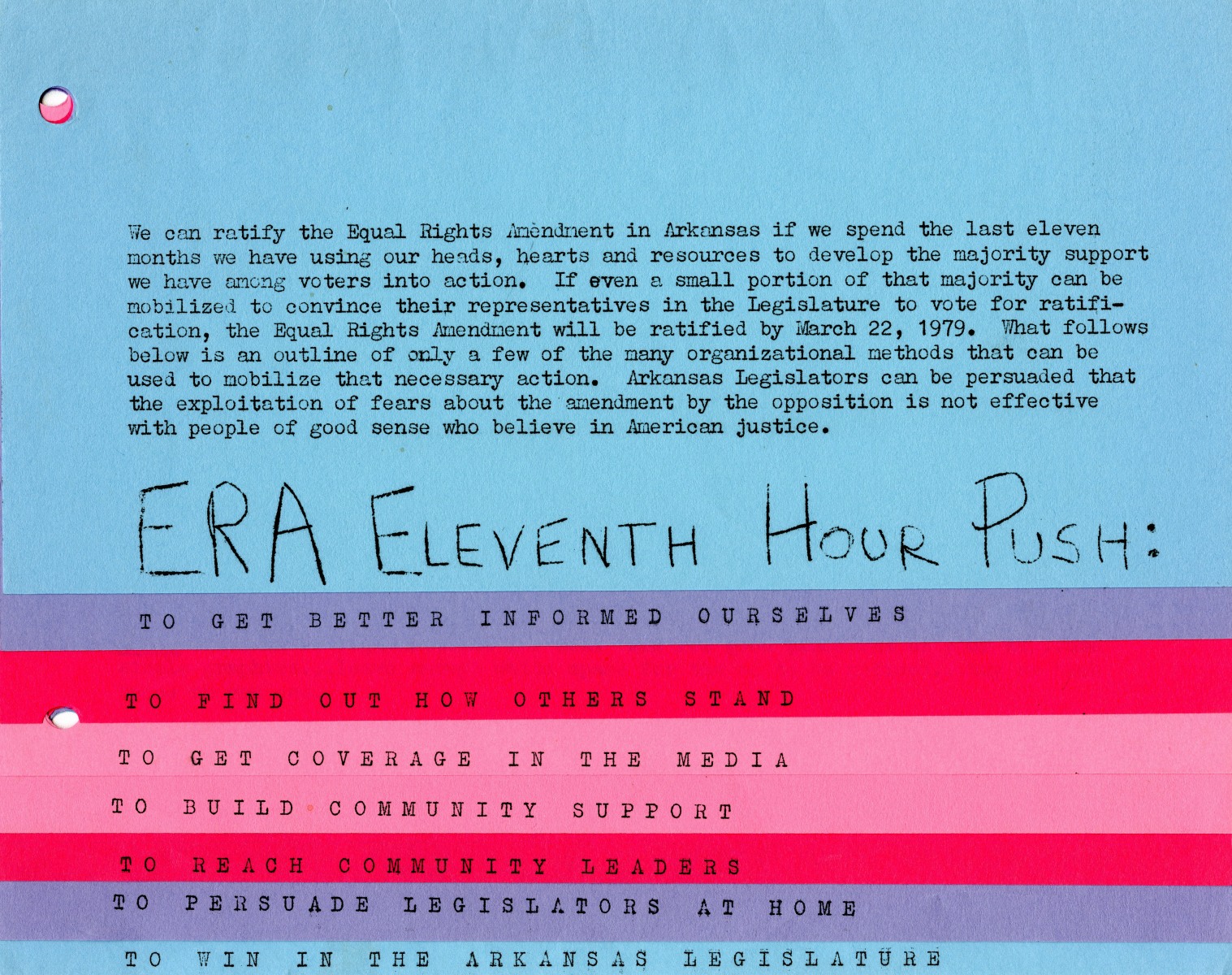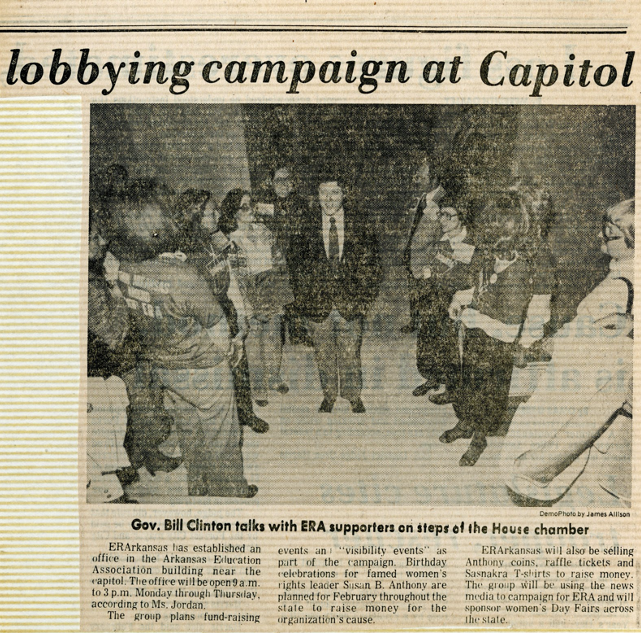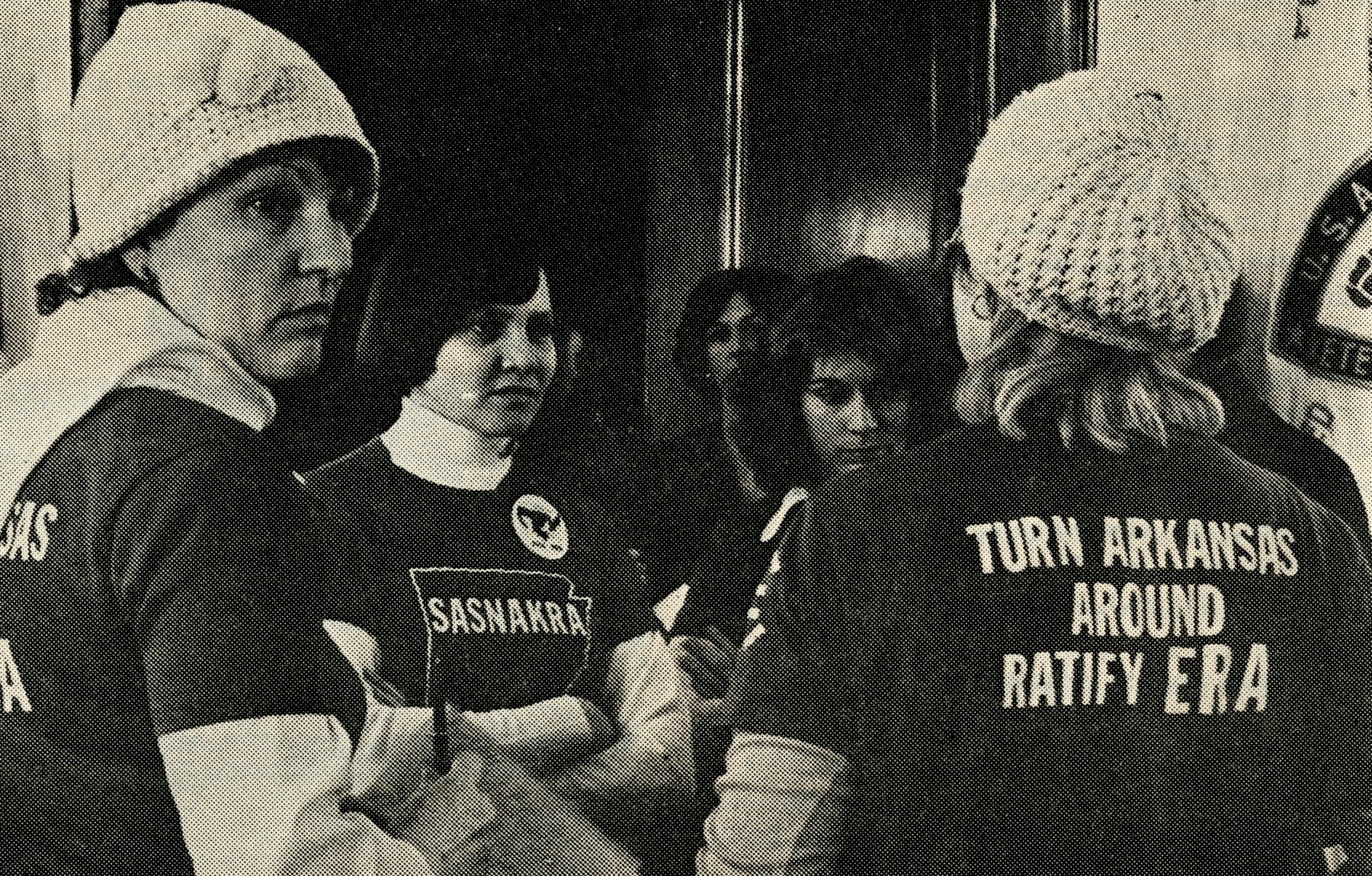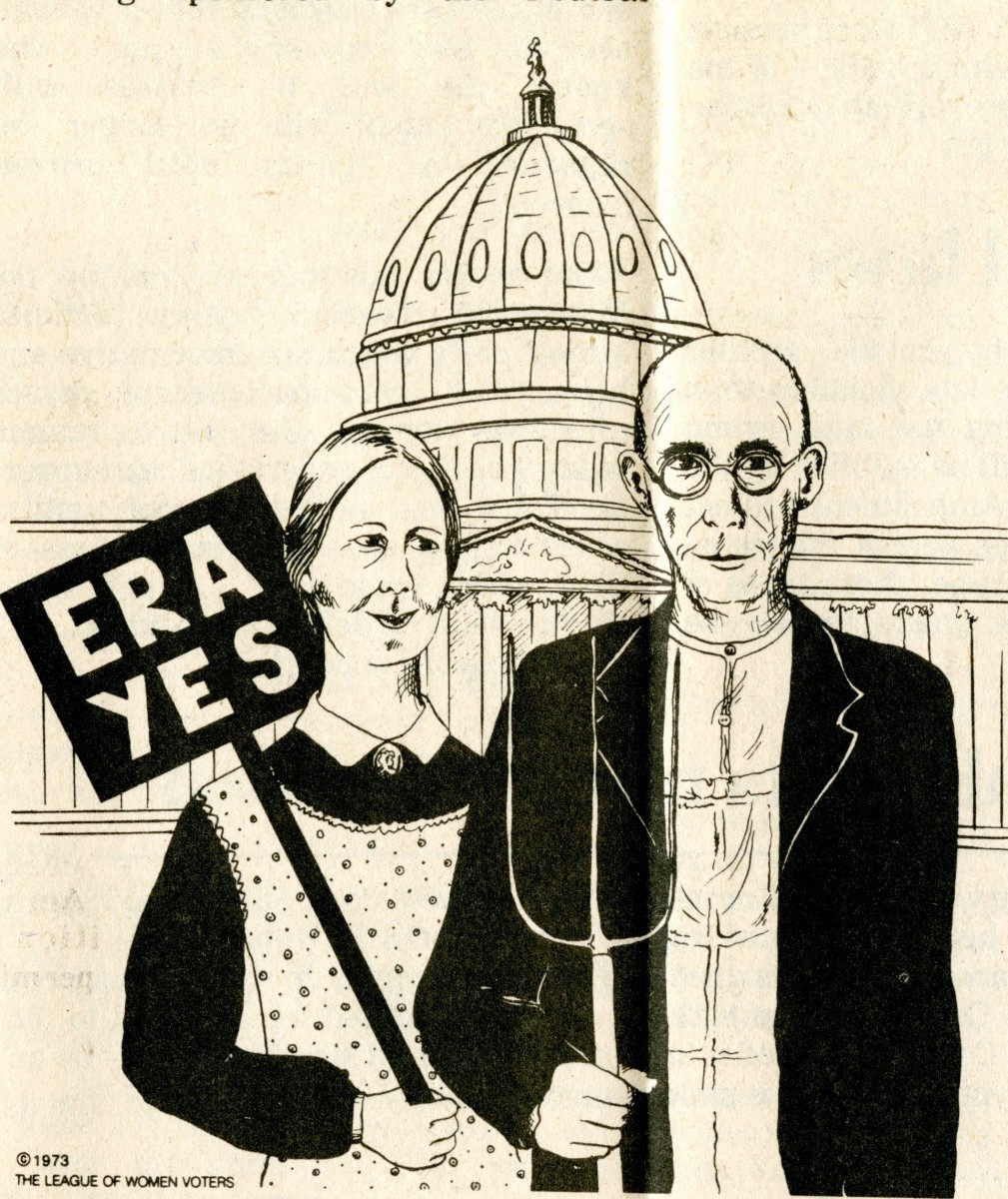Hour of Decision
The Equal Rights Amendment in Arkansas
1980 was the point of no return for the Equal Rights Amendment...
Shirley McFarlin, Alice Glover, and their compatriots in the ERArkansas coalition were running out of time to change the U.S. Constitution. For years, they had marched, educated the public, and lobbied Arkansas legislators to ratify the Equal Rights Amendment, known to many people as the ERA, which would change the Constitution to officially protect the rights of women. But the deadline was coming. They had one last chance to convince their elected representatives to ratify the ERA.
3…the Equal Rights Amendment
As Shirley McFarlin explained, a Constitutional amendment follows a two-step process:
1. PROPOSAL: A member of Congress introduces an amendment to the United States House of Representatives or the United States Senate. A two-thirds majority in both houses votes to approve the amendment and send it to state legislatures for ratification. (OR two-thirds of state legislatures can ask Congress to organize a convention to propose an amendment, but this has never occurred.)
2. RATIFICATION: Each individual state legislature votes on the amendment. If three fourths, or 38 states, vote to ratify the proposed amendment, then it is added to the U.S. Constitution. (Another way to ratify an amendment is for the states to hold special conventions and then have three-fourths of the conventions approve it. Only one amendment has ever been ratified this way.)
Can you sort these other Constitutional amendments listed below into the ones that passed and ones that failed?
The Equal Rights Amendment was introduced in the United States House of Representatives by Representative Martha Griffiths, a Democrat from Michigan, in 1971. The House of Representatives passed the ERA that same year and the Senate followed suit in 1972. Supporters were overjoyed. Many of them had been fighting for the ERA for more than 50 years since the 19th Amendment was ratified. The proposed amendment read, "Equality of rights under the law shall not be denied or abridged by the United States or by any state on account of sex.”
2…the Voices For
Don’t be fooled by the amendment’s simple language. Some ERA supporters expected it to bring massive changes in the structure of society. Women were protected by a patchwork quilt of different laws, but they varied from state to state. Click play on the video to the right to hear Kathleen Cherry describe the experience that led her to support the ERA.
Many hoped the amendment would end job discrimination and ensure that women earned “equal pay for equal work.” The Governor of Arkansas at the time, Dale Bumpers, supported the ERA in part because, “Most of America’s working women are working because of pressing economic needs. For these women – who are single, widowed, divorced, separated or deserted – equal rights and equal opportunity are no mere slogans.”
The ERA would also have benefits for men. The ERA would give them equal consideration for custody in a court system that usually granted custody to the mother in divorce cases. Men whose wives died would also be able to continue collecting her Social Security benefits, a policy which at the time only applied to women who lost their husbands. There were also labor laws that required breaks at work for women to rest, which Kathleen Cherry thought everyone should get: “Men work hard, too. They should get breaks.”
1…the Voices Against
Groups like the ERArkansas coalition, which was supported by both the Arkansas Democratic Party and the Arkansas Republican Party, got to work across the country to ratify the amendment in the required 38 states. Congress set 1978 as the deadline for ratification. Within one year after Congressional approval, 30 states had already ratified the amendment. Then, in the mid-1970s, something began to change. Ratification slowed down, and five states (Idaho, Kentucky, Nebraska, South Dakota, and Tennessee) even decided to rescind, or take back, their “yes” vote.
Women who opposed the ERA began coming to the Arkansas State Capitol by the busload armed with cakes and pies to sweet talk legislators. Many of them would go on to join the anti-feminist organization known as Family, Life, America, God (FLAG). They grew in numbers and influence as the fight over the ERA wore on.
Virginia Williams was a member of Arkansas Women’s Rights, which fought for the ERA in Arkansas. Click play on the video below to hear her experience of the first year of the campaign.
Cynthia Dorsey was an early opposition leader in Arkansas. Click play on the video below to hear her describe why she and other women were against the ERA.
FLAG, STOP ERA, the Eagle Forum, and other opposition efforts argued that existing laws already adequately protected women. They feared the ERA would unleash unknown consequences such as the breakdown of the traditional family, a requirement for unisex restrooms, and loss of access to child support.
One of the biggest concerns the opposition named about the ERA was that women would be drafted into the military and be forced to go into combat. Supporters of the ERA argued that the federal government already had the power to draft women if they chose to, pointing to the fact that Congress came very close to drafting women nurses during World War II.
The ERA supporters didn’t just go head to head with opponents at the State Capitol. Women from both sides were also trying to win over their neighbors, fellow church members, and coworkers. FLAG members ran petition drives and canvassed neighborhoods. ERArkansas spoke to as many groups of people across the state as they could, mailed out information, and hosted rallies.
Women from both sides made posters to get their point across at the rallies. You can design your own protest poster by dragging and dropping the pictures below.
0…the Final Hour
The rising conflict caused ERA ratification across the country to stall. In 1978, Congress and President Jimmy Carter extended the ratification deadline from 1978 to 1982. The extension meant that ERA supporters in Arkansas had more time to persuade the Arkansas legislature to act but they would face an uphill battle. The ERA was brought up for a vote at every legislative session in Arkansas since 1972, but each time the legislature allowed it to “die in committee.”
Arkansas will be backward until the Equal Rights Amendment is ratified. We can turn things around!
This rallying cry fueled ERArkansas’s last effort beginning in 1980. Campaign leaders split the state into six regions where they worked to build support and pressure legislators from every county. FLAG met them blow by blow and succeeded in blocking any further votes on the ERA in the Arkansas legislature. The 1982 deadline came and went, and the amendment did not have the 38 states needed for passage.
In recent years, discussion about the Equal Rights Amendment has picked up and a campaign to formally protect women through the U.S. Constitution is again underway. New generations of women have picked up the torch.
The legal status of women has changed a great deal in the 40 years since ERArkansas and FLAG were active. Wives no longer have to get their husband’s permission to open a bank account or get a loan. Men are considered for custody in divorce cases. Women are no longer barred from combat in the military. Though the fight for the ERA did not end in ratification in the 1980s, it empowered women of all political stripes to stand up for their beliefs, demonstrated the strength and persistence of women’s organizations, and showed that local action can have a national impact.










![Sasnakra: A postcard sent to ERA supporters reads, "Arkansas will be backward until the Equal Rights Amendment is ratified. Help turn Arkansas around." It includes the backwards outline of the state of Arkansas with the word "Sasnakra" [Arkansas backwards] in the middle. Sasnakra: A postcard sent to ERA supporters reads, "Arkansas will be backward until the Equal Rights Amendment is ratified. Help turn Arkansas around." It includes the backwards outline of the state of Arkansas with the word "Sasnakra" [Arkansas backwards] in the middle.](https://ualrexhibits.org/zerohour/wp-content/uploads/sites/26/nggallery/era/cache/Backwards-Arkansas.png-nggid0221-ngg0dyn-0x0x100-00f0w010c010r110f110r010t010.png)

